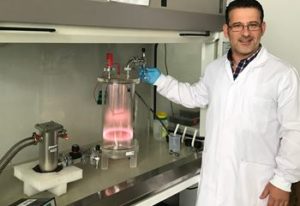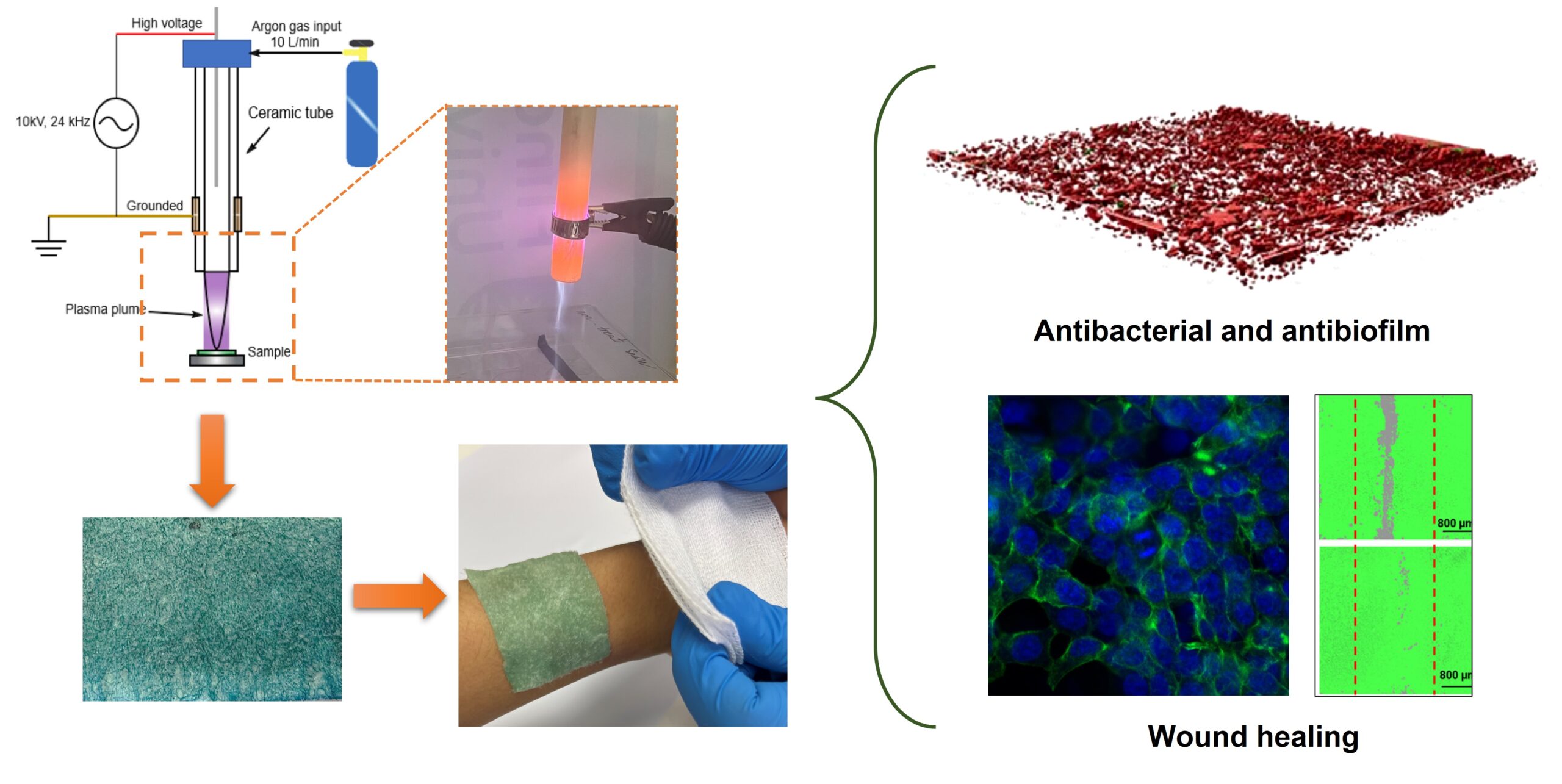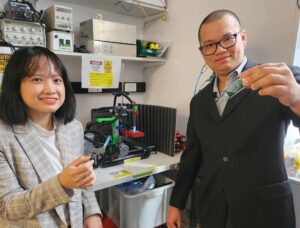Flinders researchers have taken a significant leap in the field of wound care using an innovative approach. By deploying an argon atmospheric plasma jet, they have successfully transformed Spirulina maxima, a blue-green microalgae, into ultrathin bioactive coatings.
These coatings not only tackle bacterial infections but also promote faster wound healing and possess potent anti-inflammatory properties. This holds promise especially for the treatment of chronic wounds, which often pose challenges due to prolonged healing times.
The novel approach could reduce the risk of toxic reactions to silver and other nanoparticles and rising antibiotic-resistance to common commercial coatings used in wound dressing.

The latest development, published in the high-impact international peer-reviewed nanotechology journal Small, reveals a new, just patented plasma assisted technology which sustainably processes a Spirulina maxima biomass into bioactive ultrathin coatings that can be applied to wound dressings and other medical devices and are capable of uniquely protect patients from infection, accelerate healing and modulate inflammation.
The new technique could be readily applied to other types of natural supplements, says Dr Vi Khanh Truong, from the Flinders University Biomedical Nano-engineering Laboratory.
“We are using the plasma coating technology to turn any type of biomass – in this case Spirulina maxima – into a sustainable high-end coating.
“With our technology, we can transform biomass into coatings on wound dressing which and this plasma technology is the first of its kind.”
Extract of S. maxima – a type of blue-green algae – is often used as a protein supplement and to treat skin disorders such as eczema, psoriasis and other conditions.
The WHO has warned that antimicrobial resistance is one of the top public health threats facing humanity in the 21st century. Associated with the death of close to 5 million people in 2019, it is forecast to cost world economies upwards of US$1 trillion by 2050 if no action is taken.
 Multiple genetic changes in common bacteria, such as Staphylococcus aureus and Pseudomonas aeruginosa, can lead them to become resistant to multiple antibiotics, forming what’s called ‘superbugs’.
Multiple genetic changes in common bacteria, such as Staphylococcus aureus and Pseudomonas aeruginosa, can lead them to become resistant to multiple antibiotics, forming what’s called ‘superbugs’.

Co-author Matthew Flinders Professor Krasimir Vasilev, NHMRC Leadership Fellow and Director of the Biomedical Nanoengineering Laboratory, says that the technology offers a better solutions to current commercial products, including silver, gold and copper coatings, and is an important tool to combat antibiotic resistance.
“This new, plasma facilitated downstream processing can improve extraction and purification of useful compounds from biomass without the need for harmful solvents and a lot of energy input,” says Professor Vasilev.
“We are now exploiting avenues for commercialisation of this unique technology. Currently, there is no commercial wound dressings that simultaneously fight and protect from infection, favourably modulate inflammation and stimulate healing.
“We believe that the technology will offer a market advantage to medical wound dressing manufacturers, and by reaching the hospitals, make a difference to healthcare and patients.”
The cutting-edge research is based on the work of Flinders University student Tuyet Pham’s Master of Biotechnology thesis.
This research has been generously funded by ARC, NHMRC and Flinders Foundation.
The article, ‘Transforming Spirulina Maxima Biomass into Ultrathin Bioactive Coatings Using an Atmospheric Plasma Jet: A New Approach to Healing of Infected Wounds’ (2023) by Tuyet Pham, Tien Thanh Nguyen, Ngoc Huu Nguyen, Andrew Hayles, Wenshao Li, Duy Quang Pham, Chung Kim Nguyen, Trung Nguyen, Jitraporn Vongsvivut, Neethu Ninan, Ylias Sabri, Wei Zhang, Krasimir Vasilev and Vi Khanh Truong has been published in Small (Wiley) 15 September 2023 https://doi.org/10.1002/smll.202305469.








